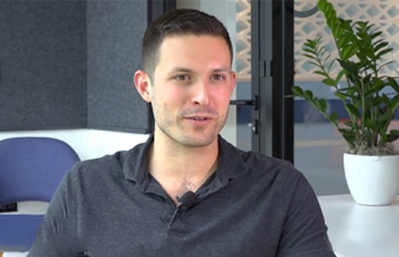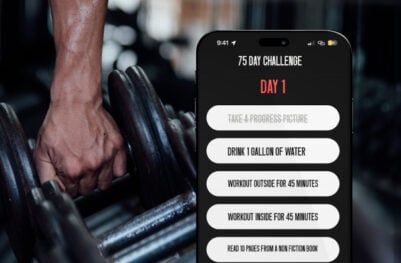- Developers
- Developer Blog
- SaaS Product Development
- What is Software as a Service SaaS Architecture

profile
Verified Expert
1 year of experience
Jamie is a dedicated, personable, and enthusiastic Microsoft MVP in Artificial Intelligence and Certified Technical Specialist. He writes deeply technical articles that combine a strong academic background with extensive industry experience in software and application development.
Wondering about Software as a Service SaaS architecture?
That’s a good question which we will explore in this article.
The delivery of software has changed over the years. Historically, applications were written for mainframes in languages such as COBOL.
In the 70s and 80s, we saw the explosion of home computing and the rise of the bedroom programmer. Computing power improved and let users run complex applications on their desktop machines’ operating systems.
Modems and Bulletin Board Systems (BBS) became popular in the 80s which allowed computer enthusiasts to offer basic online services such as crude email (Fidonet), messaging / paging facilities, and make software available for download.
All of this was done in a pre-broadband era over regular phone lines.
In the 90s, we saw the emergence of the world wide web as we know it today and computing power. Network infrastructure continued to grow in the 90s and as web technology improved, the complexity and functionality of websites continue to advance.
Finally, we saw the development of more advanced services including multi-tenant architecture that is run and accessed via remote ‘cloud’ servers.
It was during this time that we saw a paradigm shift in the way in which software was being built and made available to the end consumer. No longer did consumers have to download and install an application onto their machine to run it.
Powered by cloud computing, consumers and businesses could use services over the web in just a few mouse clicks. SaaS was born – Software as a Service.
Whether you’re new to SaaS, an experienced developer, or CTO, we’re sure you’ll find this article on SaaS application architecture interesting.
What is a SaaS Architecture Platform?

Hire expert developers for your next project
Before we dive into some of the more involved points, it’s worth mentioning what a SaaS architecture platform is.
SaaS is a way to deliver software, the provider of the software centrally hosts one or more applications and makes them available to customers over the internet. SaaS architecture is also one of the main pillars of cloud computing.
An explosion in Cloud computing, driven by cloud service providers such as Microsoft with Azure, Amazon Web Services (AWS), Oracle, and IBM, has seen the growth in other products and services being delivered over the internet. This includes the following SaaS models:
- Infrastructure as a Service
- Platform as a Service
- Machine Learning as a Service
- …and much more!
Any updates or patches to a SaaS architecture application are all handled by the provider. The customer doesn’t need to download upgrades or reinstall new versions of a product as the software is delivered over the internet.
It operates as a multi-tenant SaaS architecture where all databases and templates relevant to licensed users can be accessed regardless of location.
With an explanation of SaaS methodologies and SaaS companies out of the way, let’s look at why you might want to use this software product that’s architected like this.
Why Use SaaS Architecture?

As mentioned in the introduction, the software has been distributed to customers in a variety of channels over the last few decades. The more recent distribution channel is Software as a Service (or SaaS).
So why might you want to use a product that has been delivered “as a service”?
Consumers
From a consumer’s perspective, SaaS apps are one of the easiest and most reliable ways to use digital services or products. You simply access them over the web, pay for the service, and use them.
In recent years we’ve seen the emergence of thousands of SaaS applications services targeted at consumers such as:
- Netflix
- Microsoft Office 365
- Amazon Prime
- Google Docs
- Salesforce
- …and many more!
Being able to activate or disable SaaS products on-demand is another appealing factor for consumers, no longer do you need to drop hundreds of dollars on a software license. Most SaaS products offer a range of pricing options including a monthly subscription option where you can cancel whenever you want.
This self-service approach allows users to quickly get up and running.
Business
From a business perspective, software products delivered “as a service” allows businesses to offer their products at scale, globally, whilst also allowing them to maintain overall control over their product.
Some of the other benefits of implementing SaaS architecture in the business include, but are not limited to:
- Reduced time to market;
- Lower maintenance costs;
- Increased automation;
- Easier upgrades;
- More cost-effective;
- Single instance trials are viable as companies don’t need to commit many financial resources to try software.
Some of the most exciting B2B technologies at the moment are being delivered using SaaS cloud-native architecture.
For example, SaaS vendor Microsoft and its collection of Cognitive Services APIs have effectively democratized what were once complex machine learning algorithms, into easily consumed web services that are delivered on cloud technology.
Businesses can easily integrate these SaaS components into their existing applications and augment the functionality they offer to their customers. The business doesn’t need to be concerned about debugging or testing the SaaS component as that’s all been taken care of by the vendor.
Key Features and Benefits of a SaaS Architecture Platform

SaaS solutions have different features as compared to more traditional applications that are installed on your desktop, for example, here are some of the other benefits that deploying a SaaS-based product can bring.
The simplicity of SaaS Architecture Apps
Software applications architected as SaaS solutions are typically accessed over the web through various types of devices.
Advancements in client-side programming languages such as JavaScript have resulted in more intuitive web interfaces and, as such, make using applications delivered over the internet as easy to use as their desktop counterparts.
Economical Value
The monthly or annual subscript fee payment model makes it easier for businesses to budget, couple this with zero infrastructure setup costs, and it’s easy to see how opting to use SaaS solutions can save the business money.
Security
Security is an important aspect of software development solutions and SaaS platforms are no different. As a consumer of an application architected using SaaS, you don’t need to concern yourself with how your data is being locked down. It’s held securely in the cloud!
Hire expert developers for your next project
1,200 top developers
us since 2016
Compatibility
With traditional software installations, updates and patches can occasionally require enormous amounts of time and money. This is especially true in the enterprise.
Additionally, versioning discrepancies between team members of your workforce can lead to compatibility issues and even more wasted time. With SaaS, however, subscribers can simply log on to already upgraded services.
Capabilities of SaaS Solutions

SaaS platforms have a wide array of capabilities. Especially when coupled with other cloud offerings such as IaaS (Infrastructure as a Service) and PaaS (Platform as a Service).
Cloud technology such as Microsoft Azure lets you provision servers that can host websites, databases, and much more.
Infrastructure that would have historically been physically installed on business premises and run by internal IT teams, can now be provisioned from an online dashboard with just a few mouse clicks.
SaaS solutions can be deployed to these environments and, in theory, offer any type of service that can be developed as a software application which can include, but is not limited to:
- Office applications
- Email and instant messaging
- Social media
- Fintech services
- Exposing 3rd Party APIs
- Security and authentication
- Machine Learning
- Artificial intelligence
- Location Services
- Data streaming and lookup services
I think you’ll agree that there aren’t many constraints when it comes to the capabilities of a software product developed as a SaaS platform!
Disadvantages of a SaaS Platform

We’ve introduced Software as a Service, explored some of its key features, and discussed why you might want to adopt this architectural design pattern, or even decide to use more SaaS products in your business.
But, are there any disadvantages to rolling out a SaaS platform or using one? Let’s look at some of those now.
Lack of control in SaaS Architecture platforms
As SaaS applications are hosted in the vendor’s SaaS environment, you have little to no control over the software you’re using.
An in-house or on-premise application will give your business more control over its behavior, for example, a Windows-based application might have more configuration options than a regular web application being delivered as a SaaS application.
Limited ecosystem
It can’t be denied that SaaS is a growing trend as a software distribution channel. That said, there are still many applications that don’t offer a hosted version.
Performance
An in-house, thick client, or on-premise application will always run quicker than a product being delivered over the internet.
Data Concerns
When selecting a SaaS product, and for example, with the advent of the GDPR, businesses must pay special attention in terms of where any SaaS implementation stores data in the cloud. Each jurisdiction has its own legislative policies and acts when sensitive data is being processed or stored.
Key Components of a SaaS Platform
A key part of developing your latest SaaS product is to determine which key components or features users will expect as standard. Features will understandably be driven by market and user community demands but there are some key components that users expect.
Security
Protecting customer data in your SaaS platform is of the utmost importance, as such, your SaaS product will most likely serve hundreds, if not thousands of users. Ensure your SaaS architecture takes this into account.
Privacy
Whilst security is concerned with the locking down of the user and sensitive data, data privacy is another important component that your SaaS platform should consider. With new regulations, such as GDPR, business is more accountable than ever for ensuring user and data privacy is maintained.
With findings from KPMG stating that Data Privacy is the second most important attribute, they look for in a cloud provider, privacy is an important component to consider when architecting your own SaaS product.
Customization and Configuration
Whilst you may be able to deliver an out-of-the-box SaaS solution for most consumers that ships with a standard set of features, user interface, and functionality, the enterprise often expects additional customization to deal with use cases particular to their specific problem domain.
Factoring in extensibility to your SaaS architecture is another important component for you to consider. You can do this by shipping a “white label” version of your SaaS product or by implementing a plugin mechanism that allows businesses and/or developers to extend your white label SaaS solution.
Design Considerations for a SaaS Architecture Platform
Scalability
Will your SaaS architecture be able to scale and accommodate hundreds, if not thousands of users simultaneously accessing it over the web? Well-designed SaaS applications need to be able to do this.
Hire expert developers for your next project
You can achieve this by using hardware like Network Load Balancers to evenly distribute or optimize incoming traffic across multiple web servers.
From a software architecture perspective, you can introduce a separation of concerns by having individual layers to handle data access, business logic, and the presentation layers of your application which will help your application scale more easily.
Zero downtime and Service Level Agreements
With internal or on-premise software applications, users are more forgiving on the occasion that software must be taken offline for a given period of time whilst internal IT install a new kit or release a version update.
With a product delivered over SaaS architecture, you don’t have such a luxury. Users typically expect the product to be available almost all the time and with no interruption to service. When was the last time you heard that Facebook or Twitter was down?
Take time to consider how you’ll factor upgrades, patches, or debugging and troubleshooting production issues into your SaaS applications architecture.
It is also worth SaaS providers spending extra time training their support teams to ensure that they are able to deal with end-user queries relating to both general and complex issues relating to everything from user problems to issues caused by upgrades etc.
Multi-tenancy in SaaS architecture
For your software to be delivered as a SaaS product, it must support multi-tenancy. Your product needs to be able to accommodate multiple users whilst at the same time, ensuring that user data, privacy and are all still being observed.
Take the time to factor this into the design of your SaaS architecture and ensure that whatever you implement, has a scalable model to accommodate multiple customers.
Read more on designing a SaaS application in our article here.
Planning to adopt SaaS Architecture for your Software Applications?
According to a study, “The global cloud market is expected to reach $171,926 million by 2025”.
If you are undertaking a saas application development project and don’t have the required expertise, experience, or human resources, then why not take a moment to complete a DevTeam.Space project specification form to see how we can help you.
Our DevOps have experience building all kinds of multi-tenant SaaS applications in numerous different technology stacks.
Having helped lots of companies undertake their digital transformation from traditional processes to cloud services, we know cloud infrastructure inside out and back to front.
Our ability to build cloud apps using the best multi-tenancy architecture practices is supported by our unique agile development process that provides real-time metrics on each of our developers’ performance so that you remain fully aware of where your project tasks are at all times.
Further Reading
Here are a few articles that might also interest you:
Interested in the Kotlin vs Swift programming language battle? This is an interesting topic that we will explore here to see which one is really the best. Kotlin vs Swift comparison: I will now compare Kotlin vs Swift using several...
Continue readinghttps://www.devteam.space/blog/integrating-artificial-intelligence-to-improve-your-fintech-app/
https://www.devteam.space/blog/integrating-artificial-intelligence-and-machine-learning-into-your-crypto-trading-bot/
https://www.devteam.space/blog/integrate-floating-messages-into-your-app/
Frequently Asked Questions on SaaS Architecture
As with more traditional single-tenant software, SaaS can be both open source and proprietary commercial software. While they are frequently hosted in the same data center, sometimes even developed by the same company, the difference is that the code base for open source software is transparent and available for use by others.
Many SaaS applications are now more popular than their traditional counterparts. They boast powerful tools such as voice interaction, data security, and secure storage, which is why they have been successful in onboarding so many new customers.
Microsoft Office 365, Box, and Salesforce.

Alexey Semeney
Founder of DevTeam.Space
Hire Alexey and His Team
To Build a Great Product
Alexey is the founder of DevTeam.Space. He is award nominee among TOP 26 mentors of FI's 'Global Startup Mentor Awards'.
Hire Expert Developers





